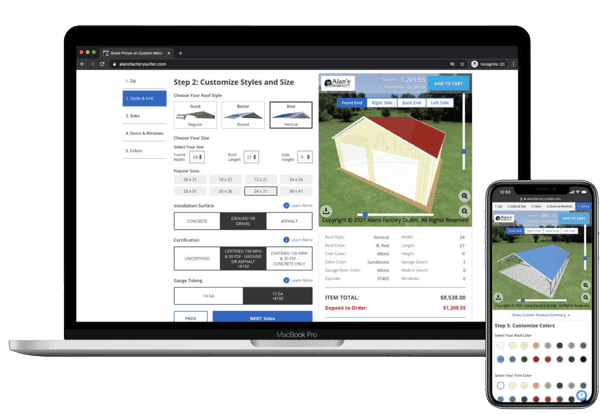Introduction to Carport Maintenance
A carport is a great investment that provides protection from the elements for vehicles, outdoor equipment, and more. It can prevent costly damage, increase your peace of mind, and even boost your property’s value. Plus, it can offer the convenience of extra storage space.
Just like your home and other investments, it’s important to take proper care of your carport. In this guide, I’ll provide the essential information you need to keep your carport in top condition. You’ll learn how to perform regular carport maintenance to prevent damage and ensure your carport’s durability and longevity. That way it can safeguard your belongings from the elements and provide other benefits for years to come.
We’ll cover everything from basic maintenance tips, like cleaning, to methods for protecting your carport from strong winds and moisture. Let’s start!
Why is Regular Maintenance Important?

First, carport maintenance isn’t optional—it’s crucial in extending your carport’s lifespan and preserving its functionality over time. Regular maintenance will help you identify early signs of damage and make prompt repairs to prevent further issues. This will keep your carport sturdy, looking great, and capable of providing you with the benefits carports are known for.
I understand how sometimes it can be challenging to stick with routines like cleaning and maintenance. Remembering the purpose behind the routine can really help with staying consistent. So, you might find it helpful to keep in mind what your basic carport maintenance efforts will accomplish, such as:
- Preventing structural damage and deterioration that could weaken your carport’s strength and integrity.
- Ensuring the safety of people who use your carport, as well as your vehicles and other items you store there.
- Preserving the value your carport adds to your property, including its appearance.
Tips for Regular and Preventative Carport Maintenance
Since steel carports are among the most popular carport types, I’ll be focusing mostly on them throughout this guide. However, many of the tips can apply to other types of carports such as wood or aluminum.
Clean Your Carport

The first step in your carport’s regular maintenance routine is cleaning it. Cleaning your carport once a year is a good way to preserve its condition over time. The cleaning process helps to remove residue, dirt, and grime—as well as mold and fungus if your carport is made of wood or another organic material.
Speaking of mold and fungus, one of the reasons metal carports are so popular is because, unlike wood, steel is rot– and fire-resistant. Rot (or decomposing material) is typically caused by mold, fungus, and mildew. However, even if steel itself is rot-resistant, mold and fungus can still feed on debris like leaves, dirt, and other organic things.
On that note, here are some simple cleaning steps to follow:
- Start your cleaning process by using a broom to sweep off any debris from your metal carport’s roof and walls.
- Spray down the surfaces with a garden hose.
- Wash your carport using a solution of warm water and mild detergent or soap. Be sure to avoid abrasive cleaning products and bleach on metal carports as these can damage or stain them.
- Use a soft cloth to wipe down the surface of your metal carport gently.
Safety Tip: Be sure to use a sturdy ladder and follow safety precautions to avoid injury. The roof of your carport may be slippery, especially when wet, and may not be designed to support your weight.
Inspect the Foundation
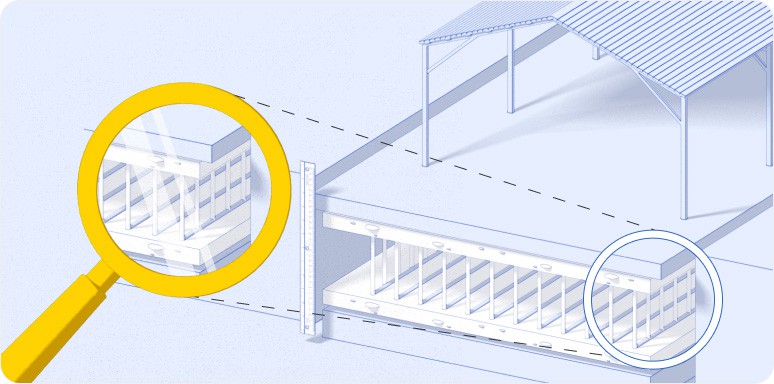
Whether your carport is installed on a concrete slab, asphalt, or directly on the ground, it’s important to regularly inspect the foundation. Check for signs of wear and tear as well as cracks and settling. Damage to the foundation can alter the shape of the carport and affect the structure’s strength and stability. Please don’t skip this step.
If you’re looking to buy or build a new carport, setting up its proper foundation is crucial. Start by evaluating suitable foundation options based on your location and soil conditions. You’ll find concrete is the top choice for carport foundations due to its solid, stable nature that can withstand heavy winds and other tough weather conditions. Also, concrete is low maintenance and can last for decades, making it ideal for long-term use.
Examine the Roof
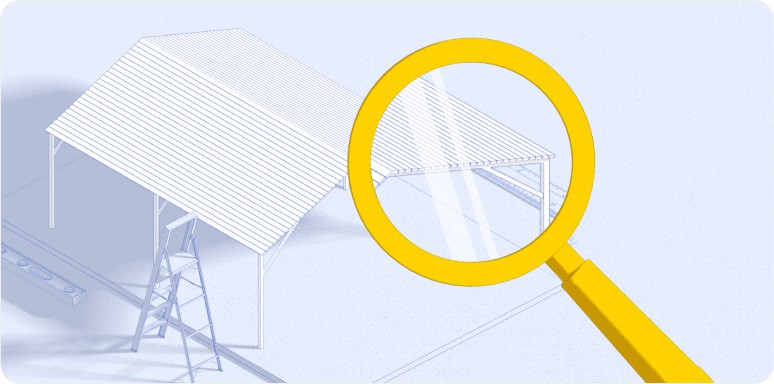
Every few months, and after any big storm, you should examine your carport’s roof for build-up of debris, such as leaves, pine needles, branches, twigs, or dirt. This is especially important in the fall and winter months. Debris build-up can trap moisture, leading to potential corrosion spots on the roof panels. Regularly clear any debris you see on the roof.
If you get hail in your location during winter or stormy seasons, check to make sure it hasn’t damaged your roof. Depending on your roof type and material, clear out heavy snow build-up to prevent the roof from caving due to excessive weight. If you have a vertical-roof carport, it will be much easier to clear off snow and debris—and most of it will just slide off.
Check All Metal Components

To best ensure your metal carport’s durability and reliability, regularly check the metal parts throughout it. Start by scanning the metal roof panels and walls for rust and other signs of damage.
Also closely inspect all bolts, screws, or fasteners to make sure nothing is loose, and tighten them if needed. If you have a large carport that’s more garage-like, lubricate moving metal parts on doors and windows. This helps to prevent rust or corrosion.
Repair Damage to Prevent Costly Issues
A big part of proper carport maintenance is simply making sure small problems don’t become big problems. Regularly assess and inspect your carport for any signs of damage such as rust, corrosion, holes, and cracks. Repair any issues you find right away to prevent damage from worsening, which could lead to extensive, costly repairs.
Note that aluminum carports do not rust. Also, rust and corrosion will rarely be an issue if you have a carport made of rust-resistant galvanized steel like the metal carports we sell. All our carports are made of American steel and manufactured in the USA. If you’re interested in getting a metal carport from us, you can customize it as much as you want and get an instant price for it by using our carport calculator here:
Instantly Price Your Metal Carport
Choose your size, style, and roof — get a real-time estimate right away.
Tips for Damage Control and Timely Repairs
Preventing Rust

Rust can be a common issue for steel carports. If the protective galvanized coating is scratched and exposed to water for extended periods of time, rust can develop in this area. There are two things you can do to prevent rust before it gets started:
- Avoid standing water. Don’t let the base rail of your carport sit in a pool of water. Make sure that water flows away from the bottom of your carport.
- Avoid piles of wet leaves. If leaves build up on your roof, broom them off. When shopping for a carport, choose a style that allows the leaves to slide off easily.
Removing Rust
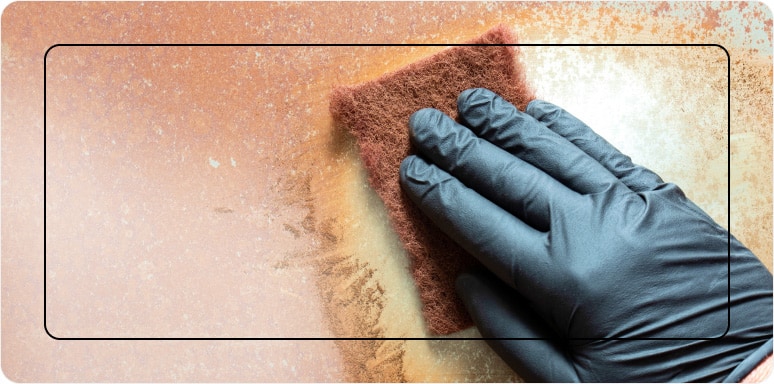
If you notice rust on your carport, use special rust removal products and scouring pads to eliminate it. After removing the rust, you can apply protective coatings to prevent future damage.
You can also buff your carport with a metal polishing paste for extra protection. Here are more helpful tips for stopping rust on metal.
Managing Mold
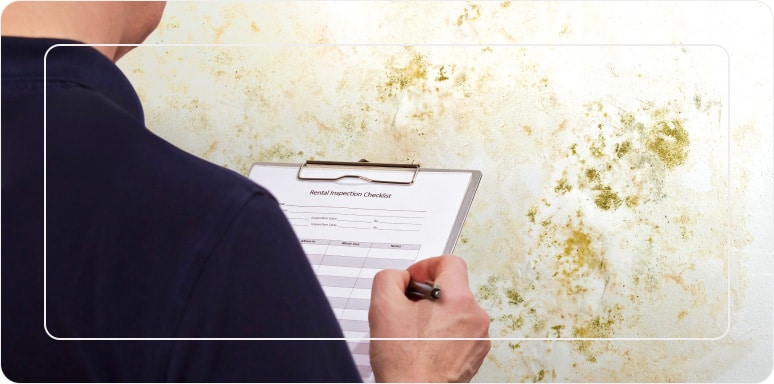
Humid conditions can lead to mold growth on your carport, particularly wood carports. If you see this problem, you can use a solution of bleach and water to clean the affected areas. Before you start, put on protective gear including gloves and goggles, and make sure the area you’re working in is well-ventilated. Better yet, call a professional mold remover to handle it as mold and fungus can be extremely toxic if inhaled.
To prevent mold from returning, consider applying a protective water- or moisture-resistant sealant. Or if you’d prefer to get a new metal carport that is mold- and rot-resistant, check out our popular metal carport options.
Fixing Holes and Cracks
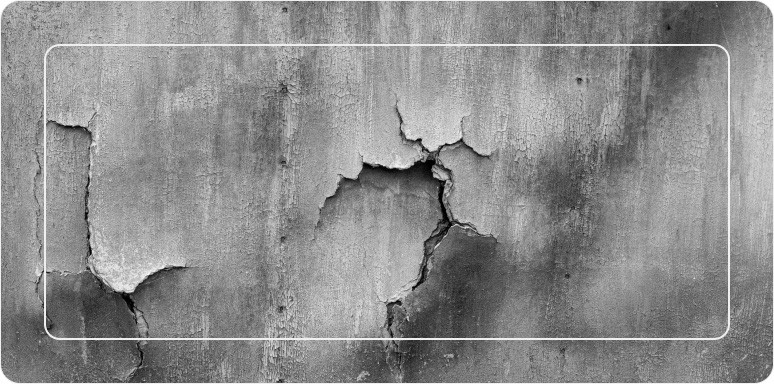
Metal carports are unlikely to develop holes or cracks thanks to the robust nature of steel. Regardless of your carport’s material, if you see holes or cracks in the roof or walls, you should repair them right away as they can quickly get worse. They can also lead to rust and corrosion.
Depending on your carport’s material, you can use a combination of urethane roof cement and steel roofing mesh for repairs. Before applying, clean the area thoroughly to remove any rust, mold, or dirt. Contact a professional to help you if you’re unsure about making repairs yourself.
Repairing the Foundation

Conducting routine inspections for cracks or settling in the foundation as mentioned earlier is going to help ensure any existing issues don’t get worse. However, if or when you do see foundation issues, repairing them promptly is a must. This is because of how vital a foundation is to the overall structural integrity of a building.
Issues with concrete foundations can easily be repaired with quality concrete filler material and sealant. For serious foundation repairs, it’s best to contact a professional.
How to Stop a Carport from Swaying in Strong Winds
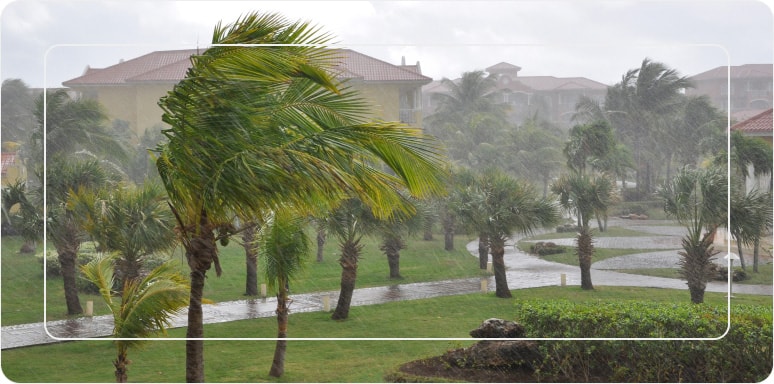
If you live in a windy area or a region prone to tornadoes or typhoons, properly securing your carport is vital. At a minimum, ensure the carport is securely anchored to the ground or the house. You can also add diagonal braces for extra stability to the structure. Reinforcing weak points to resist wind forces is also a good idea.
Carport Anchoring Options
Make sure to choose appropriate materials for stability along with the right anchoring techniques to secure your carport. There are many anchoring techniques and materials to choose from. Rebar anchors, concrete anchors, asphalt anchors, and even mobile home anchors are all popular choices for anchoring carports. The right anchor for your carport depends on the type of foundation it is resting on.
Depending on your knowledge and experience, you may want to consult a professional to help you. If you’re interested in learning more about anchoring your carport, check out our helpful guide.
How to Protect Against Moisture Damage
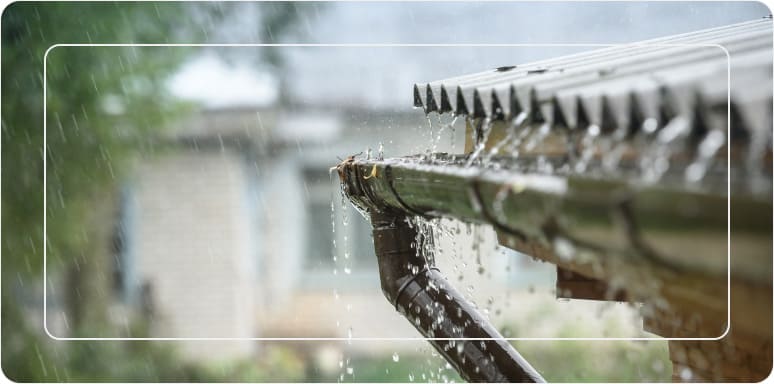
Depending on your carport material, water- and moisture-related damage can lead to mold problems, rotting, and corrosion. It’s important to repair these kinds of issues quickly when you see them.
Evaluate and install drainage systems around the carport
To prevent moisture damage, make sure the area surrounding your carport is well-drained to avoid water pooling. Installing gutters and downspouts can also help direct water away from your metal structure, thus reducing the risk of rust and insect breeding.
Apply Sealants and Seal Cracks and Gaps
Applying sealants to your carport can offer extra protection from moisture and make cleaning dirt and grime easier. Consider investing in a good-quality sealant. In addition, immediately seal any cracks and gaps you find to help prevent water from getting in.
Keep Standing Water Off of Concrete Foundations
The main drawback of concrete is that it doesn’t drain water through fast enough like gravel or ground does. If water collects on your concrete carport foundation, make sure to sweep it off right away. Don’t let it stand for too long as this can cause rust and potential cracking.
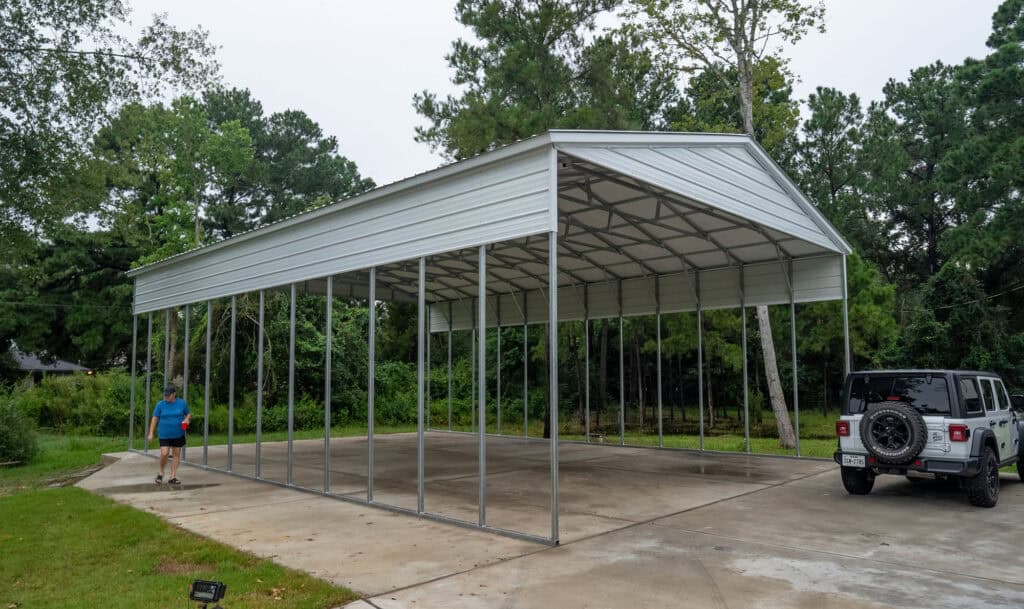
Design a Carport You’ll Love to Care For
If you’ve invested in a carport or are thinking about it, I hope this guide has been helpful in showing you how to maintain and protect your investment.
When people ask, “Is a carport worth it,” those who own one will often answer, “It absolutely is.” Carports provide enormous benefits that save you time and money while making life more convenient and less stressful. For example:
- You won’t have to worry about elements like sun, water, and wind damaging your vehicles.
- You can protect your outdoor equipment and other important items by keeping them sheltered there, too.
- For all these reasons and more, carports can increase the value of your property.
Unlike carports made of wood and other materials, our metal carports will last a long time and are rot- and fire-resistant (as well as insect-resistant). They require minimal maintenance and are easy to keep in excellent shape.
With Alan’s Factory Outlet, you can design and customize your carport exactly how you want by using our simple design tool. What kind of carport can you dream up? I’d love to see it.


